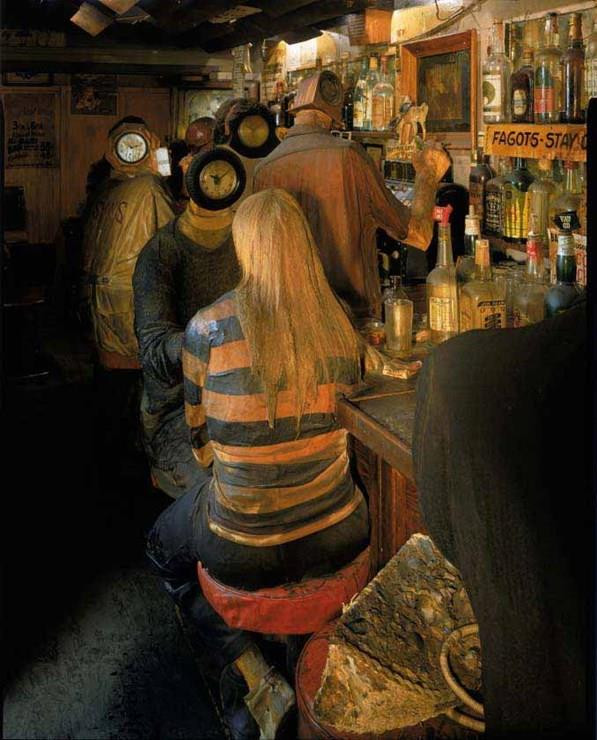The Beanery, 1965
Jan 20, 2015
Back on view Spring 2017.
- Time
- Jan 20, 2015, 9.36 am
- Admission
- Noodzakelijk. Stuur een email naar reservations@stedelijk.nl met uw volledige naam, email-adres, telefoonnummer en de datum waarop het programma plaatsvindt dat u wilt bezoeken.
The Beanery (1965) by the American artist Edward Kienholz (1927-1994) might just be the most popular object from the Stedelijk Museum collection. The installation has been fully restored in 2012 and has been on display since the reopening of the museum.
The Beanery has been stored in the depot for the last few months. Because of the vulnerability of the installation (wear and tear by visitors, photosensitivity etc.) it is good to let the object ‘rest’ in the depot, where it is dark. Today the installation has returned to the museum, and is on view again in gallery 1.15.
ABOUT THE BEANERY
Edward Kienholz (1927–1994) made The Beanery in 1965, basing it on his local bar, The Original Beanery on Santa Monica Boulevard in Los Angeles. It took Kienholz six months to consolidate and replicate the bar’s content in an artwork. Everything in the installation is life size: from the figures – inspired by Kienholz’s friends and acquaintances – to the bar, bottles of beer and spirits, ash trays, cash register, telephone book, and jukebox. Even the photos on the wall duplicate those of The Original Beanery.
Remarkably, Kienholz gave each person in his bar a clock for a face, a reference to his fascination with time. Only the barman, modeled after Barney, the bar-owner at that time, has a face. Smelling and sounding like an actual bar, the installation is an evocative sensory experience that visitors are allowed to enter. The typical bar smell is characteristic for the way Kienholz work. The artist made a special recipe: the smell has to be assembled from beer, rancid fat, urine, mothballs and cigarette ash. The scent paste has been made multiple times by the restoration team of the Stedelijk Museum (the urine has been replaced by ammoniac). By coating the work with a synthetic resin the artist instills a sense of mortality and transience, which is amplified by the brown color of the interior, with its evocations of age and decay.
The Beanery is also something of a time capsule. The sign warning “faggots stay out” clearly conveys the intolerant attitudes of American society at the time, while the headlines of the 1964 newspaper in a newspaper dispenser at the door indicate that the United States is on the brink of war with Vietnam. Kienholz came up with the idea of creating his own version of the Beanery in 1958 but commenced work on August 28, 1964, upon reading the headline Children Kill Children in Vietnam Riots while visiting the real bar. The harsh contrast between the “real time” represented by the newspaper headline and the “surreal time” of the bar’s customers impelled Kienholz to start work on the tableau.
A video has been made for the restoration in 2012 explaining more about the impact of daily visitors on the condition of the object.

